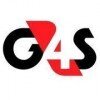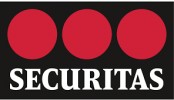Filter interviews by
Pro Align Security Fireman Interview Questions and Answers
Pro Align Security Fireman Interview Experiences
1 interview found
I applied via Approached by Company and was interviewed before Oct 2022. There were 2 interview rounds.

(3 Questions)
- Q1. Classification of fire
- Ans.
Fires are classified based on the type of fuel involved, such as Class A (ordinary combustibles) or Class B (flammable liquids).
Fires are classified into different classes based on the type of fuel involved.
Class A fires involve ordinary combustibles like wood, paper, and cloth.
Class B fires involve flammable liquids like gasoline, oil, and grease.
Other classes include Class C (electrical fires), Class D (combustible m
- Q2. What is the triangle of fire
- Ans.
The triangle of fire represents the three elements necessary for a fire to occur: heat, fuel, and oxygen.
The three sides of the triangle represent heat, fuel, and oxygen.
Heat is necessary to raise the temperature of the fuel to its ignition point.
Fuel is any material that can sustain a fire, such as wood, paper, or gasoline.
Oxygen is required to support the combustion process.
Removing any one of these elements can help
- Q3. Defination of fire
- Ans.
Fire is a rapid chemical reaction that releases heat, light, and various gases.
Fire is a rapid oxidation process that releases energy in the form of heat and light.
It requires fuel, oxygen, and heat to sustain itself.
Common examples of fuel for fires include wood, paper, gasoline, and natural gas.
Fire can spread rapidly and is a dangerous force that must be controlled by firefighters.
Interview Preparation Tips
- Fire and safety
Top trending discussions






Interview questions from similar companies

Fire & Safety Supervisor Interview Questions & Answers
Tech Mahindraposted on 14 Oct 2024
(2 Questions)
- Q1. Fire protection
- Q2. Safety prevention
Interview Preparation Tips

I was interviewed in Aug 2022.

(2 Questions)
- Q1. Fire Eupament questions
- Q2. Class of Fire class of Eupament
- Ans.
The class of fire for Eupament is not a recognized classification.
Eupament is not a recognized substance for fire classification
Fire classes are typically classified as A, B, C, D, or K
It is important for fire officers to be familiar with fire classifications to properly respond to fires
Interview Preparation Tips

(3 Questions)
- Q1. Fire and safety and health
- Q2. Fire fighters and fire extinguisher maintenance
- Q3. Fire hydrant mantence
Interview Preparation Tips

I applied via Naukri.com and was interviewed in Jul 2021. There was 1 interview round.
Interview Questionnaire
14 Questions
- Q1. 1. Tell me about yourself?
- Q2. 2. What do you mean by CORONA ( single sentence)
- Q3. 3. What are the disaster that you consider in ERP of your organisation?
- Q4. 4. What do you know about defensive driving?
- Q5. 5. What are the intrinsic electrical safety device?
- Ans.
Intrinsic electrical safety devices are designed to prevent electrical hazards in hazardous environments.
Intrinsic safety barriers
Intrinsic safety isolators
Intrinsic safety relays
Intrinsic safety switches
Intrinsic safety transformers
Intrinsic safety fuses
- Q6. 6. Did you face any LTI in your current or previous organization?
- Q7. 7. What you mean by safety management?
- Ans.
Safety management refers to the process of identifying, assessing, and controlling hazards to prevent accidents and injuries.
Safety management involves developing and implementing policies and procedures to ensure a safe working environment.
It includes conducting risk assessments, identifying potential hazards, and implementing controls to mitigate risks.
Safety management also involves training employees on safe work p...
- Q8. 8. What are the elements of safety management?
- Ans.
The elements of safety management include planning, organizing, leading, controlling, and evaluating.
Planning involves identifying potential hazards and developing strategies to mitigate them.
Organizing involves assigning responsibilities and resources to ensure safety measures are implemented.
Leading involves promoting a safety culture and providing training and education to employees.
Controlling involves monitoring a...
- Q9. 9. What do you mean Incident management?
- Ans.
Incident management refers to the process of identifying, analyzing, and responding to incidents in a timely and effective manner.
It involves developing and implementing plans and procedures for responding to emergencies and other incidents.
It includes assessing the situation, determining the appropriate response, and coordinating with other stakeholders.
Examples include responding to fires, natural disasters, hazardou...
- Q10. 10. What is your daily routine & what are the responsibility in your current organisation?
- Q11. 11. What type of PPE you are using in your current organisation?
- Ans.
In my current organization, I use a variety of PPE to ensure safety.
I use fire-resistant clothing to protect against heat and flames.
I wear safety helmets to protect my head from falling objects.
I use safety goggles to protect my eyes from dust, debris, and chemicals.
I wear gloves to protect my hands from cuts, burns, and chemical exposure.
I use respiratory masks to protect against inhalation of harmful gases or partic
- Q12. 12. Which standard full body harness you use?
- Ans.
We use ANSI/ASSE Z359.11-2014 standard full body harness.
We prioritize safety and use harnesses that meet the ANSI/ASSE Z359.11-2014 standard.
This standard ensures that the harnesses are tested and certified to meet safety requirements.
We also ensure that the harnesses fit properly and are regularly inspected for wear and tear.
Examples of harnesses that meet this standard include the DBI-SALA ExoFit NEX and the Miller
- Q13. 13. Which class electrical hand gloves you use in your organisation?
- Ans.
We use Class 0 and Class 2 electrical hand gloves in our organisation.
Class 0 gloves are used for maximum voltage of 1000V AC and 1500V DC.
Class 2 gloves are used for maximum voltage of 17000V AC and 25000V DC.
We ensure that the gloves are tested and certified before use.
We also provide training to our employees on the proper use and care of the gloves.
- Q14. 14. By which procedure you take your decision at workplace?
Interview Preparation Tips

I applied via Recruitment Consultant
Interview Questionnaire
12 Questions
- Q1. Building work Fire and Safety
- Q2. Building sistem work
- Ans.
Building systems refer to the various components and subsystems that make up a building's infrastructure.
Building systems include HVAC (heating, ventilation, and air conditioning), plumbing, electrical, and fire protection systems.
These systems work together to ensure the safety, comfort, and functionality of a building.
For example, the HVAC system regulates the temperature and air quality, while the fire protection sy...
- Q3. Sistem working on
- Ans.
I'm sorry, but I don't understand the question. Could you please rephrase it?
Please provide more context or clarify the question
I am unable to provide an answer without a clear understanding of the question
- Q4. Building relationships work
- Q5. Seftay rolls
- Q6. Work on the other items and Safety
- Q7. All system working
- Q8. Ready
- Q9. Building information on
- Q10. Work in the middle and out time
- Q11. Employee compensation
- Q12. President
Interview Preparation Tips
Pro Align Security Interview FAQs
Tell us how to improve this page.
Interview Questions for Popular Designations
- Fireman and Safety Interview Questions
- Fire & Safety Officer Interview Questions
- Fire Officer Interview Questions
- Fire & Safety Supervisor Interview Questions
- Fire Supervisor Interview Questions
- Fire Alarm Technician Interview Questions
- Fire Technician Interview Questions
- Fire Fighting Foreman Interview Questions
- Show more
Pro Align Security Fireman Interview Process
based on 1 interview
Interview experience
Interview Questions from Similar Companies
|
Cctv Operator
11
salaries
| ₹1.8 L/yr - ₹2.3 L/yr |
|
Security Supervisor
7
salaries
| ₹1.5 L/yr - ₹3 L/yr |
|
Security Officer
6
salaries
| ₹2.5 L/yr - ₹4.1 L/yr |
|
Payroll Executive
5
salaries
| ₹2.7 L/yr - ₹3.2 L/yr |
|
Office Assistant
4
salaries
| ₹1 L/yr - ₹2.6 L/yr |

G4S

Security and Intelligence Services (India)

Securitas

Tops Security
- Home >
- Interviews >
- Pro Align Security Interview Questions >
- Pro Align Security Fireman Interview Questions












